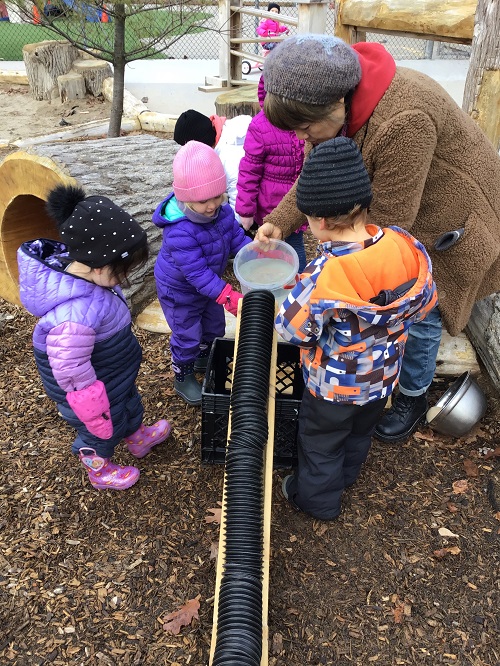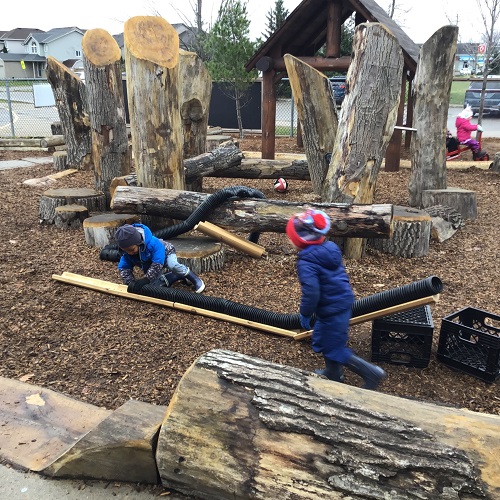The Preschool 2 children at RisingOaks Early Learning | John Sweeney have shown a keen interest in speed and movement. Whether rolling, pushing, pulling, or holding objects, they naturally engage in exploring the dynamics of motion. Recently, this interest turned into a captivating inquiry-based activity that deepened their understanding and curiosity about movement.
One day, during outdoor play, the children were particularly fascinated by rolling balls down a ramp. They eagerly experimented with controlling the speed and movement by adjusting the height and power of the ramp. Recognizing their enthusiasm, educator Hope proposed that they build their own ramp to further explore these concepts. Then, together, they gathered materials such as wooden boards, big pipes, and milk boxes and worked collaboratively to construct a long and sturdy pipe ramp. This activity fostered teamwork and problem-solving skills as the children negotiated the best way to assemble the ramp. When the first ball rolled through the pipe and emerged at the other end, Stella exclaimed with delight, “Wow, I like it!” Anthony observed, “Look! My ball came out! Fast!” The children experimented with various techniques to influence the ball's speed and trajectory. They tested different pushing strengths and explored how the size and weight of the balls affected the outcome. This hands-on exploration allowed the children to engage in scientific thinking, testing hypotheses and making observations about cause and effect.
Their curiosity didn’t stop there. They began to wonder, “What if we let water flow through the ramp?” Excited by this new idea, they brought a bucket of water and poured it into the pipe. However, the children noticed that the water did not flow out as expected. After some investigation, they discovered that balls were stuck in the pipe, blocking the water’s path. This discovery led to an important realization: water, unlike balls, requires a clear and unobstructed path to flow in this environment. Determined to learn more, the children decided to revisit their experiment. They planned to test how water flows when the path is clear and to compare the speed of water to that of the balls. Their willingness to refine their experiment demonstrated persistence and a developing understanding of the scientific process.
Through this engaging activity, the children developed foundational STEM skills. Their exploration aligns with Jean Piaget’s theory of cognitive development, as they constructed knowledge through hands-on experiences and active problem-solving. Lev Vygotsky’s concept of the “zone of proximal development” was also evident as the educator scaffolded their learning by introducing new materials and guiding their inquiry.
As Ariston joyfully exclaimed, “Hope! It was so much fun!", this activity highlighted the value of play as a powerful learning tool. The children are eagerly anticipating their next experiment, excited to uncover more about movement, speed, and the behavior of water. These moments of wonder and discovery reinforce the importance of fostering curiosity and collaboration in early childhood education.
We look forward to supporting their next steps in this playful journey of learning and exploration!












